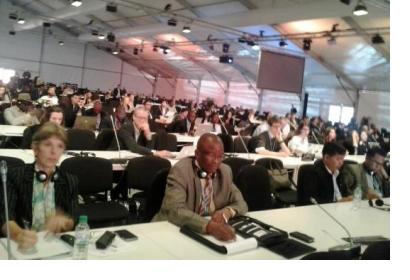On Tuesday 08 November 2016, UNFCCC organized the “Earth Info Day” during CoP 22 as part of the SBSTA activities. The event was used to showcase the benefits of Earth observation to track the manifestations of climate change in the atmosphere, in the oceans, and the polar caps. The opportunity was used to make participants attending this event aware of the strengths of Earth observation technologies to track the uneven manifestation of sea-level rise in different regions of the world, the melting of ice in the polar caps, in Greenland and in glaciers, the changes in concentration of greenhouse gases in the atmosphere in recent decades, and of the changes in temperature and salinity that the oceans are experiences as a result of the absorption of heat and CO2. The Global Climate Observing System (GCOS) took the opportunity to present information on the GCOS Implementation Plan that has been presented to the CoP for consideration; as well as efforts to be conducted by the World Meteorological Organization and the European Commission to contribute to reduce uncertainties regarding greenhouse gas emissions in years to come.
UNOOSA and other organizations were invited to take part in this event through the presentation of posters. The posters prepared by UNOOSA were devoted to make delegations aware of the usefulness of satellite technologies to contribute to adaptation and loss and damage efforts. The posters also provided information regarding how UNOOSA contributes to climate change efforts through its Programme on Space Applications and through UN-SPIDER; and on the on-going UNISPACE+50 process.
The WMO offers more information and documents submitted during the Earth Information Day here.

